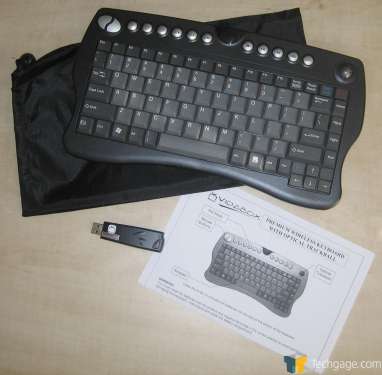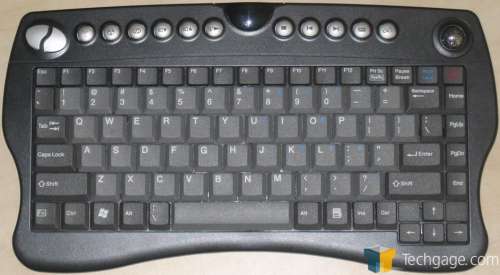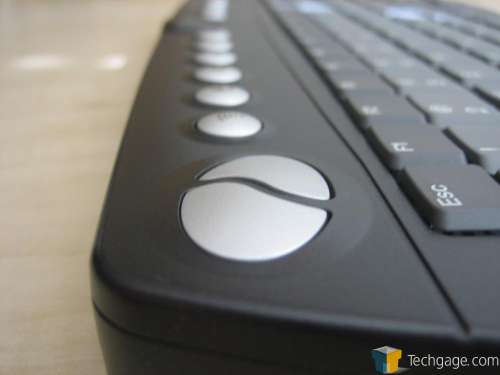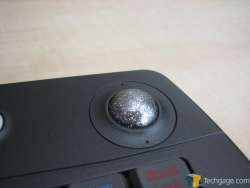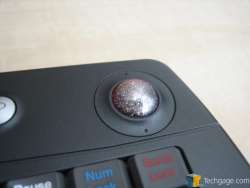- Qualcomm Launches Snapdragon 4 Gen 2 Mobile Platform
- AMD Launches Ryzen PRO 7000 Series Mobile & Desktop Platform
- Intel Launches Sleek Single-Slot Arc Pro A60 Workstation Graphics Card
- NVIDIA Announces Latest Ada Lovelace Additions: GeForce RTX 4060 Ti & RTX 4060
- Maxon Redshift With AMD Radeon GPU Rendering Support Now Available
VidaBox Wireless Media Keyboard
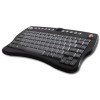
VidaBox produces some of the finest HTPCs on the market, but until recently, they’ve bundled keyboards from other companies. We are taking a look at their first own offering, a wireless solution with built-in trackball. It’s compact, sturdy and surprisingly impressive.
Page 1 – Introduction
|
|
Whether you’re sitting on your couch using your home theatre pc to surf the net, play Unreal Tournament or chat with your friends about the Doctor Who episode you’re watching (Jack is the Face of Bo!?!), this keyboard will definitely do the job. It’s lightweight, compact and versatile.
This keyboard is perfect for a HTPC (home theatre pc) setup. That being said, while not its main design, it also functions quite well for everyday use with your pc, particularly if you’re familiar with using a normal laptop keyboard layout, or have a small amount of desk space to work with.
Opening the box, I’m greeted by a keyboard, a USB receiver, a storage cover and an instruction sheet.* What I like immediately is this does not scream “I’m a PC keyboard disguised as a HTPC keyboard.”
One caveat, I’m testing this out on my PC for the simple reason the home theatre system is in disarray at the moment while I try to figure out why the DVD player keeps losing sound. The effect is the same however, as I’m using it wirelessly, testing out the range and functionality of the keys. Since most HTPCs are setup in a closet or cabinet, I’m testing this mainly parked on my lap with my desk between the keyboard and the USB receiver to simulate possible interference from a cabinet door. I haven’t detected any yet, read on!
*Note: The USB extension cable was not shipped with my keyboard, seems the boss (Rob Williams) kept it for himself! ;-)
- Specifications
- 30-foot (10m) wireless range
- Compact form factor with integrated 800 dpi optical trackball pointing device and mouse buttons
- Auto-shutoff feature preserves battery life
- Requires 3 AA batteries (alkaline or rechargeable – included)
- Battery Life: Two (2) month stand-by time
- High performance, high frequency wireless allows minimal dropped signals/dead zones
- Premium anti-dust keyboard pouch included
- Dimensions: 12.83″ x 5.04″ x .97″ (326mm x 128mm x 24.72mm)
- Weight: 1.13lbs (512 grams)
Transport Buttons Compatibility: Native to Windows Vista, XP, 2000, and Ubuntu Linux 7.04.
Let’s look at how the instructions compare with the online specs and instructions of this device, which can be found here.
Instructions: Connect the USB receiver to the USB extension cable and place the USB receiver in a location away from other wireless electronics and where it will have full line of sight with your keyboard at all times. Bring the wireless keyboard within 3 feet of the USB receiver with clear line of sight – no obstructions.
Website: This product comes with its own high frequency USB receiver, and comes packaged with everything you need to get started!
30-foot (10m) wireless range (so 30 foot wireless range if I use a 27 foot USB extension cable?)
Unlike other conventional infrared (IR) and radio frequency (RF) wireless keyboards, special high frequency wireless technology allows a pronounced increase in performance – with a minimum in dropped signals and “dead zones.” No more frustrations with non-working keyboards!
So the instructions are saying one thing, while the online information completely contradicts it:
- 3′ vs 30′
- Clear line of site required vs high frequency wireless technology with a minimum of dropped signals
Already I’m confused and I haven’t even put batteries in it yet – oh wait never mind, they’re included. Well at least that’s a bonus.
Author’s Note: After this review was initially posted, we received notice from VidaBox that "The 3′ range requirement is ONLY during synchronization of the keyboard. Beyond that, you can use the keyboard with its full 30′ range." I wanted to clarify any misunderstanding in this regard.
Let’s Go!
So let’s plug this thing in and take it for a test drive. There appears to be no software drivers required, so let’s see how it goes. (By the way – Windows XP recognized it immediately, no drivers required, no software required and I did not have to synch the keyboard and receiver as stated on the in-box instructions, however knowing how to do so may come in handy someday).
G6sh 5t’s s6 t5ny
Oops, Num Lock was on! That first sentence was supposed to be, ‘Gosh it’s so tiny’, but with Num Lock on, some of the keys act as a numpad, which I didn’t notice, though there are tiny faint blue numbers on some of the keys. Sadly other than an onscreen indication at toggle, there’s no way to know just by looking at the keyboard if your Num Lock, Caps Lock, Scroll Lock or function keys are in active mode. And when I meant this keyboard is tiny, I’m not kidding: Dimensions: 12.83″ x 5.04″ x .97″ (326mm x 128mm x 24.72mm).
Let’s look at some other keys. The compact-ness of this keyboard does allow your fingers to reach every single key quite comfortably.
Across the top between the mouse keys on the left and the mouse tracking ball on the right, are what appear to be media and shortcut keys. The first one is the keyboard synchronization button, for when you need to resynch it to the receiver. The second one opens Windows Media Player and starts playing the CD in my drive. The next three are volume, specifically mute, volume down and volume up. The play/pause button follows that and skipping across we find stop, replay and skip to next track to round out our audio controls. Next up is the email button, quickly opening my default mail program and lastly a W with a circle around it, which opened a browser but not my default browser (for shame). And finally we’re at the mouse track ball.
The mouse track ball is actually surprisingly fast and accurate, though I still have my regular mouse plugged in for those quick jobs. Using the trackball is actually a two handed affair, your right hand controls the cursor and your left hand has access to the ‘mouse buttons’ – odd choice, I would have found a way to put the mouse buttons actually over with the trackball, but no one asked my input when they designed this.
On a side note, the trackball faintly flashes when the keyboard is in use and lights up sparkly red when the trackball itself is in use. I don’t see the reason to have it flash when idle, except to use up battery power. It also oddly lights up for no apparent reason on occasion. Just a side note, I would not recommend using this trackball if you’re playing games with this keyboard, it’s small and unfamiliar to most gamers. It does however work quite well with all the Windows applications with normal point and click requirements.
|
|
Support our efforts! With ad revenue at an all-time low for written websites, we're relying more than ever on reader support to help us continue putting so much effort into this type of content. You can support us by becoming a Patron, or by using our Amazon shopping affiliate links listed through our articles. Thanks for your support!




